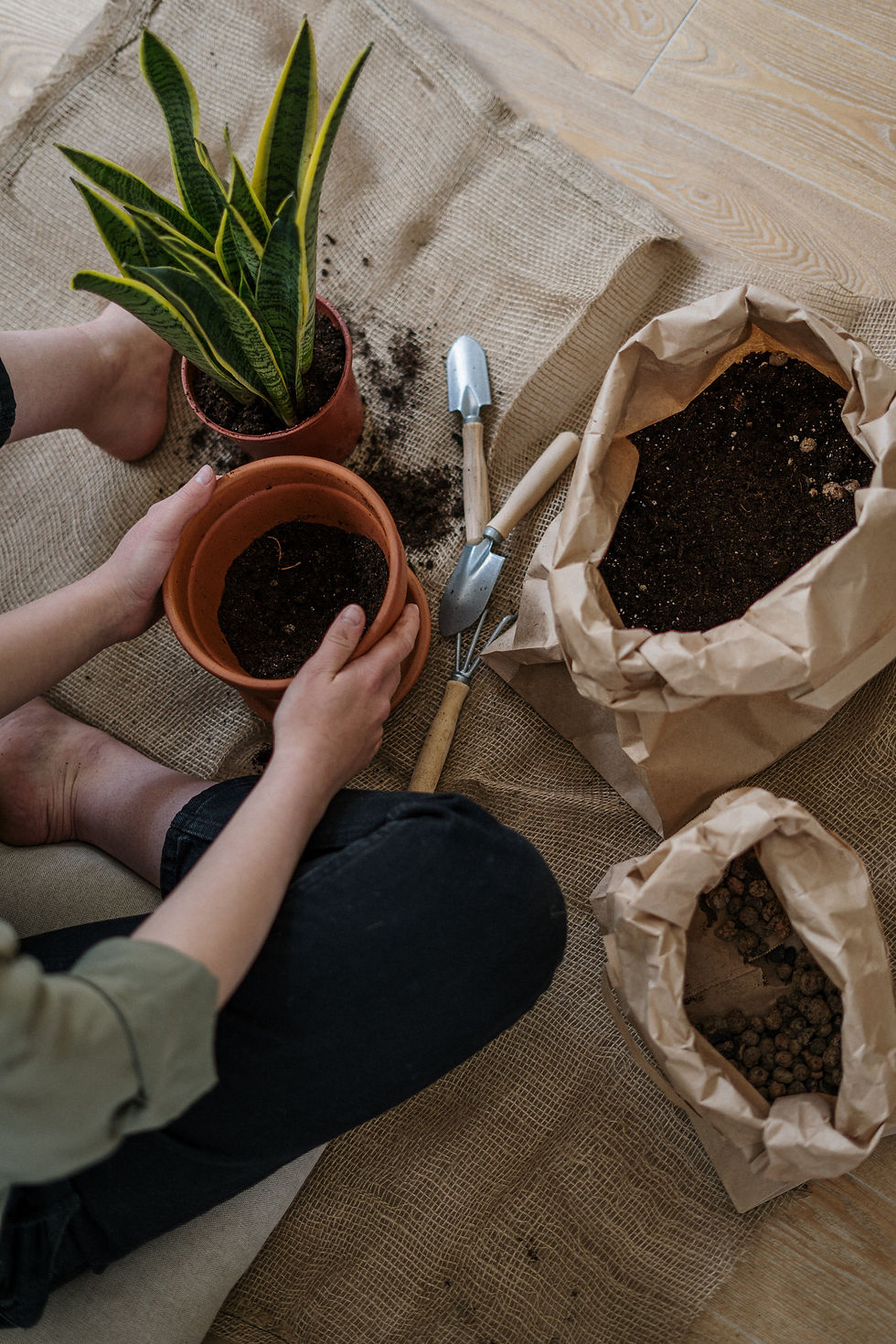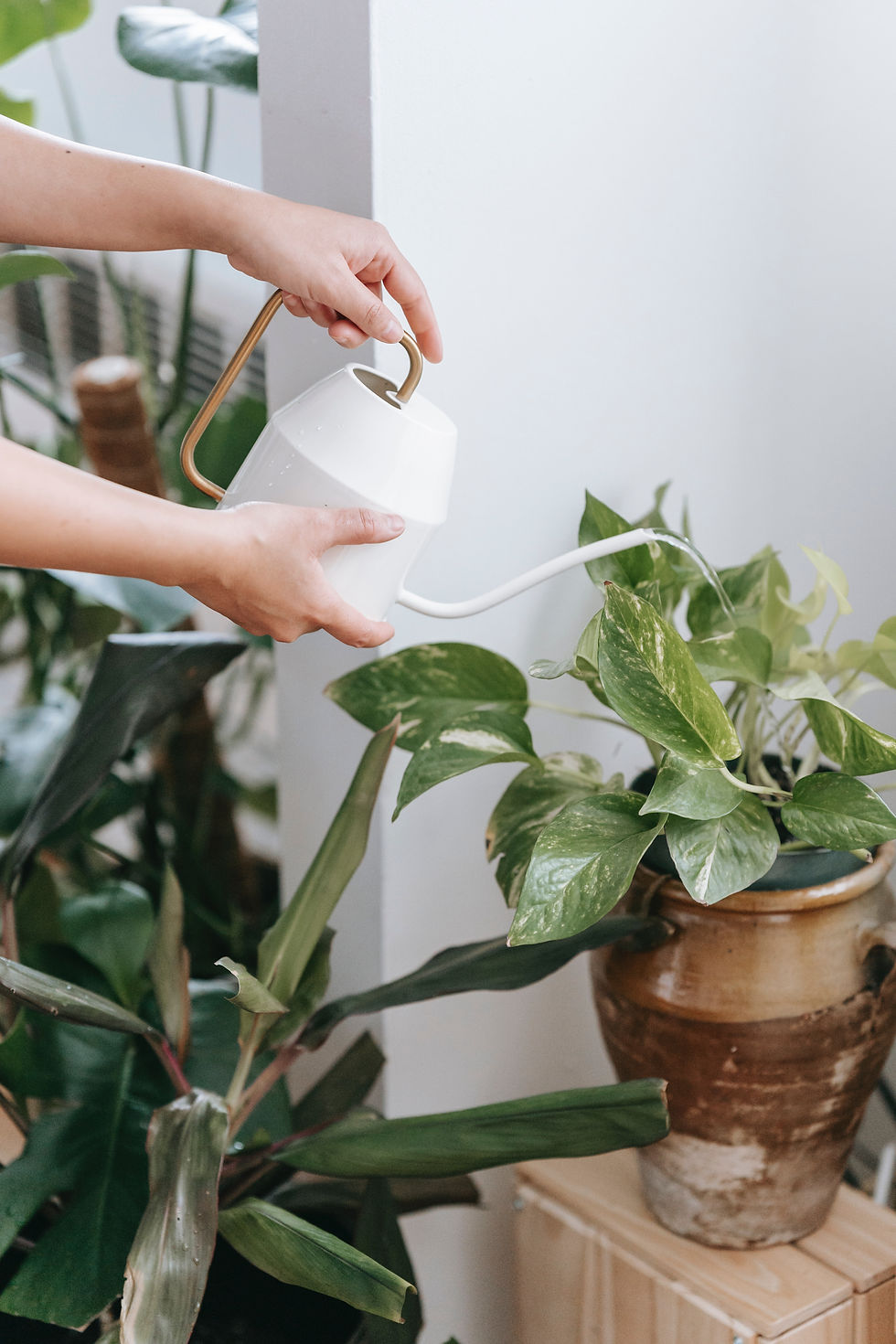Spring Cleaning - Houseplant Edition
- Thorsen's Greenhouse

- Apr 13, 2023
- 3 min read
Spring has finally arrived, and it's the perfect time to give your houseplants some TLC! Not only will it help them look their best, but it will also promote healthy growth as we enter the growing season. Spring cleaning isn't just for your home! Here are some simple care and cleaning tasks you can do to keep your houseplants thriving this season:

1. Repot If Needed
Spring is the ideal time to repot your houseplants, if needed. If your plants have outgrown their containers, now is the time to re-pot them. Choose a pot that is slightly larger than the current one, and add fresh soil and fertilizer to give your plants a nutrient boost. This will help promote healthy growth and prevent root rot or other diseases. We recommend going up one pot size (or a pot that is approximately 1 inch larger than the current pot).
Signs your plant might need repotted:
Visible roots through the drainage holes or top of the pot
Tightly compacted soil
Plant needing watered significantly more
The plant is over 3 times larger than the pot
2. Clean Your Plant
One of the most important tasks you can do for your houseplants in the spring is to give them a good cleaning. Over time, dust and debris can build up on the leaves, blocking sunlight and reducing the plant's ability to absorb carbon dioxide. To clean your plants, simply take a damp cloth and carefully wipe down the leaves. This will help your plants breathe easier and look their best! We recommend doing this frequently to prevent dust build up on the leaves. Be sure to also remove any debris from the plant pot - such as fallen leaves.
You can also take the time to clean your plant's pot! Over time, mineral buildup can accumulate in the soil and on the pots, which can harm your plants. Depending on your pot material, simply soak it in warm, soapy water and scrub away any debris.
3. Trim & Prune
Don't be afraid to prune your plant! Getting rid of unruly or unwanted growth is a great way to promote new growth. If you notice any leggy or overgrown stems, use an clean pair of scissors or snips to trim them back and promote bushier growth. In some cases you can propagate the trimmed stems and leaves and grow new plants!

4. Adjust Your Watering
As with all seasons, your watering schedule may need to change for spring. Spring is a time when your plant is exiting it's winter dormancy and entering into a new season of growth. As the temperature rises and sunlight increases, so does the plant's growth - meaning it needs more water to maintain. Pay close attention to your plants during this time to ensure their soil is not going dry!
5. Begin Fertilizing
Fertilizing is always an optional step in plant care, however fertilizer and plant food can do wonders for your plant's growth! Providing your plant with a little extra boost can make all the difference. As soon as you notice new growth on your plant, you can begin fertilizing! We recommend beginning slow and increasing the fertilizer as the season progresses in order to not overwhelm the plant's root system. You may want to start fertilizing once every two weeks and increase to once a week as the plant grows - this will be different for all plants! A balanced houseplant fertilizer will provide the necessary nutrients for full and robust plant growth.
Keep in mind, all plants are unique and will require different care - these tips are only guidelines, and what your plant needs may vary. Giving your plants a little extra attention this spring can keep them looking and feeling great as we enter the growing season. Grab your gardening gloves and get to work – your houseplants will thank you for it!
Like this blog post? Find similar content using the tags below.





You've provided a wealth of knowledge Aerocity Escorts Near Me. There is a lot of useful information on this fascinating subject.
It is important to keep in mind that every plant is distinct and will call for a different kind of care; the following advice is schoolboy runaway merely a guideline, and the requirements of your plant may differ.
Are you aware that using Turnitin is free? Plagiarism is a serious infraction for which you may be expelled or fail. The most widely used program for checking for plagiarism is Turnitin. It is the only practical plagiarism detector you can use to be sure your projects are free of plagiarism. Free turnitin report tool is typically accessible for free through the school's student portal. Learners can easily turn in their work thanks to it. If the program isn't available through your educational portal, you can ask the university librarian. Through Turnitin self-check or the student portal at your university, you can utilize Turnitin to verify your papers for free. You can ask coworkers to use your account if you don't…